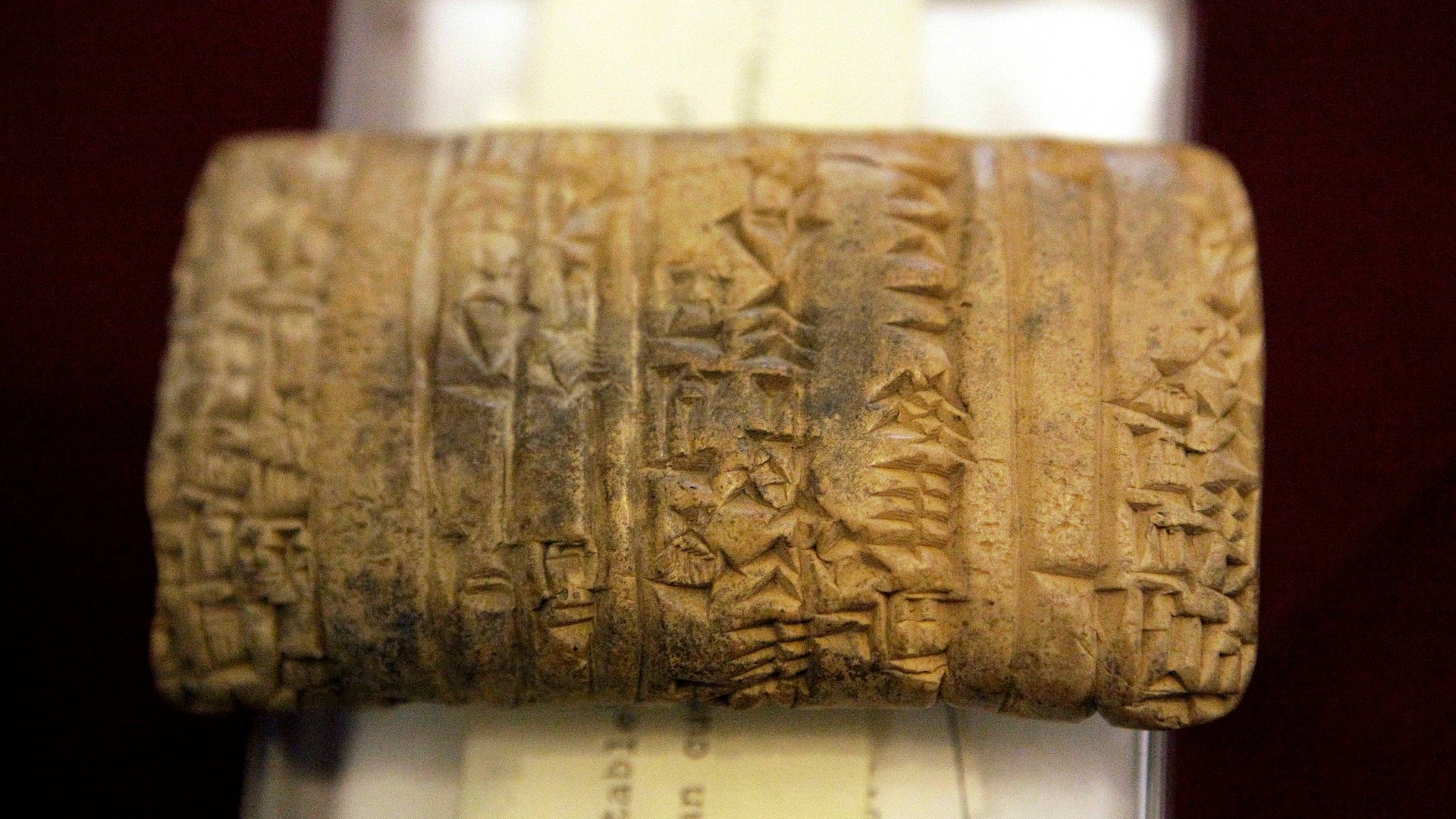From the 4,000-year-old mother of all economies, a dire warning about the US fiscal cliff
Ur: a cautionary tale about economic collapse.


Ur: a cautionary tale about economic collapse.
No, not “ur” as in text-message shorthand for “you are,” but Ur, the Sumerian city-state southeast of Baghdad that had its heyday in the 21st century—the 21st century before Christ, that is—and whose ruins betray the lingering folly of the world’s earliest economic system to have left detailed records.
“Ur is the origin of modern political economy and it failed because of the irrationality of its governing system,” says ancient-economics analyst Steven Garfinkle, professor of Sumerian history at Western Washington University in Bellingham, Washington. “Bad behavior contributed to Ur’s downfall.”
As the ancient historians tell it, Ur’s leaders wrote the first known playbook on how to fall off a fiscal cliff.
“Ur collapsed because the system could not be controlled,” says Wojciech Jaworski, a Sumerian financial archeologist with a PhD in computer science at the University of Warsaw Institute of Informatics. “Ur was bad management and corruption so rampant that individuals who produced goods lost all motivation to produce. That’s one lesson of ancient Ur and it resonates strongly today.”
The Polish professor spends his days using sophisticated software to probe the cryptic fiscal data Urian scribes some 4,000 years ago scratched on now fragile cuneiform tablets. The Sumerian Economic Corpus contains over 45,000 of these tablets out of around 100,000 that archaeologists have dug up from that period, detailing everything from workers’ salaries to travel diets.
To be sure, lists of sacrificial lambs transferred to high Urian officials in the month of sze-kin-ku5 are on nobody’s list of current economic indicators. The Bible gives Babylon all the buzz. Ur has a name-recognition problem. But Jaworski and his colleagues are out to change that. He says the statistics compiled inside the ziggurat have a mighty depressing tale to tell.
Ur’s ruling class ignored the significant climate and environmental disruptions that advanced the kingdom’s disintegration. The tablets chronicle droughts, changing river patterns and a recognizably massive build up of silt that barred ships from accessing the Persian Gulf.
Daily life nonetheless continued on a purely materialistic course and, historians say, focused on earning the maximum amount of wealth and enjoying the highest degree of comfort and luxury. Although the citizens of Ur were a religious people with many gods, their prayers exclusively pleaded for prosperity and commercial success.
“Everyone was very suspicious of everyone else,” Jaworski says. “They would complain and frequently resorted to royal courts to get their way. Ur was the most centralized and perhaps litigious state the world has ever known.”
Ur’s economic and political chaos is more deeply probed in Garfinkle’s new book, Entrepreneurs and Enterprise in Early Mesopotamia. While the scholarly study isn’t beach reading, the professor’s stroll down this forgotten memory lane does provide a glimpse into a period of history when plutocrats were worshiped as priest kings and former US Vice President and Halliburton Chairman and CEO Dick Cheney would have worn a sheepskin skirt.
“Ur’s politicians and merchants were one and the same, exercising power simultaneously in different sectors,” Garfinkle says. “Cheney would not have stepped down from Halliburton or any of his corporate roles upon becoming vice president. The people of Ur would have found such resignations unfathomable.”
Insider trading was encouraged. “Entrepreneurs got ahead on the basis of their connections,” Garfinkle adds. “Think of Wal-Mart, Apple and Microsoft ruling the country as a combined family-controlled government business without shareholders. That’s how Ur was run.”
War was big business, a core sector underwritten mostly by sheep, agriculture and precious metal trading. “Fealty and the collection of tribute from military conquest created an elite caste accustomed to success,” Garfinkle says. “It’s naive to think that society at large profited from this.”
To some, this centrally-planned, nepotistic kleptocracy might sound like an object lesson more for the Soviet Union than for today’s capitalistic world. Yet David Owen, professor of Ancient Near Eastern Studies at Cornell University in Ithaca, New York, urges global leaders to pay attention in class. “Why did Ur fall apart?” Owen says. “Pressure from the outside, foreign immigration and a bureaucracy that became too stifling to handle it. The lesson of Ur is that nobody listens to lessons.”
Perhaps most apt as a warning to today’s statesmen who toy with taxes while pushing debt ceilings ever higher: what cemented Ur’s fall from plenty was that ultimately, the government ran out of money.
“Actually, they ran out of sheep,” Garfinkle says. “Sheep and urban real estate were Ur’s principal fixed assets. The elite became too addicted to booty. All loans were guaranteed by oaths in the name of the king because it was the king—the government—who ultimately paid off all outstanding loans.”
And if ancient Ur is indeed a harbinger of a future political economic cataclysm, Garfinkle warns that folks employed during the apocalypse should not even think about taking the day off. “Managers—and fishermen—who failed to appear were hunted down and thrown in work camps,” he says.